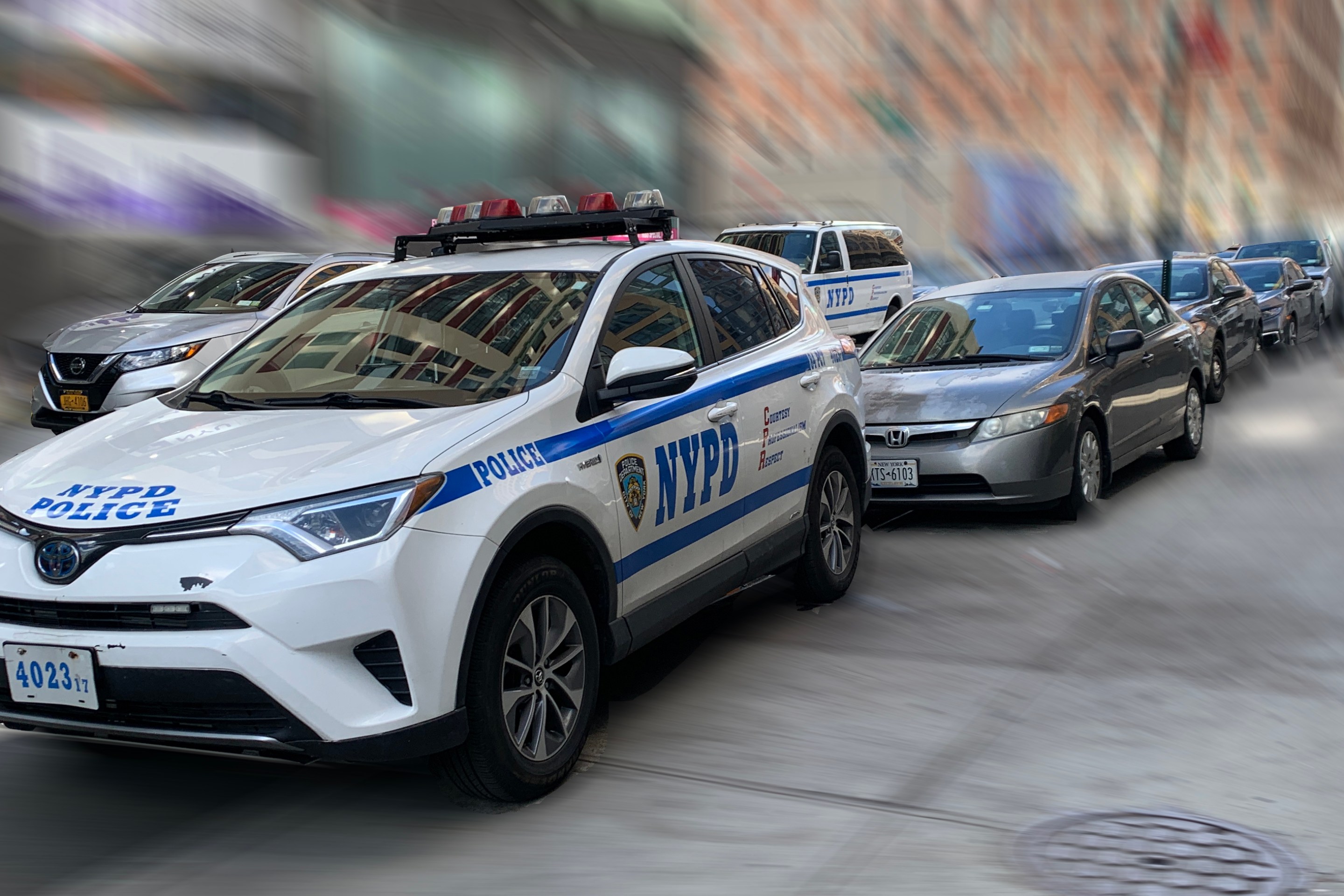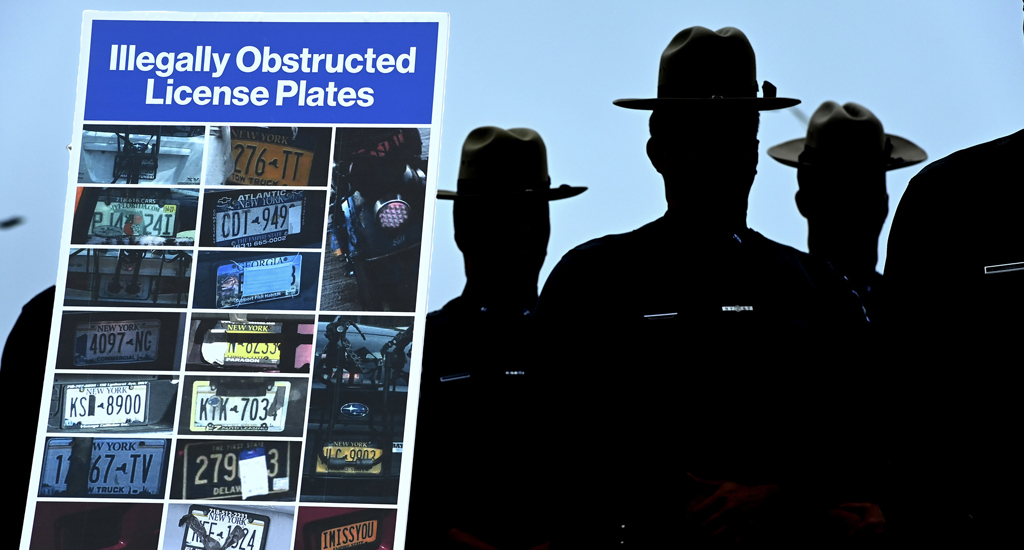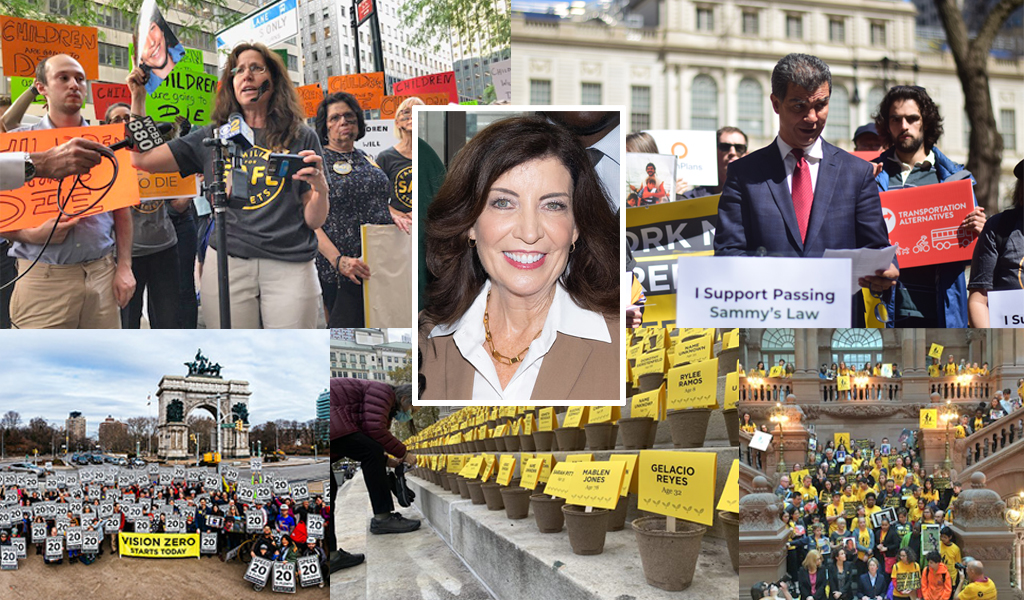It’s de Blasio and Bratton vs. the World on Times Square Plazas
5:09 PM EDT on August 20, 2015
Let's start with some basic facts: Most people like Times Square better now that it has more room for people. Gone are the days when the sidewalks were so meager that you had no choice but to walk in traffic. After Broadway went car-free through Times Square in 2009, pedestrian injuries plummeted 40 percent. Retail rents soared. And yet, going against just about everyone else who has something to say about it, Mayor Bill de Blasio is entertaining the idea of eliminating the plazas.

Police Commissioner Bill Bratton started things off when he said he'd like to remove the plazas to curb topless women and people in cartoon costumes hustling for tips in Times Square. “I’d prefer to just dig the whole darn thing up and put it back the way it was, where Broadway is Broadway and not a dead-end street,” Bratton told 1010 WINS.
Asked about Bratton's comments, de Blasio didn't reject the idea. “Commisssioner Bratton and I have talked about that option... That’s a very big endeavor, and like every other option comes with pros and cons,” he said. "So we’re going to look at what those pros and cons would be. You could argue that those plazas have had some very positive impacts. You could also argue they come with a lot of problems."
Tearing out the plazas would, among other things, run directly counter to de Blasio's Vision Zero street safety goals. After the plazas were installed, pedestrian injuries fell 40 percent at Times Square, and injuries to car drivers and passengers dropped 63 percent along Broadway in Midtown, according to a 2010 DOT report [PDF]. The incidence of people walking in the roadway at Times Square fell 80 percent.
“People forget just how disastrous it was. There was clearly no room to walk and people were just forced into the street," Transportation Alternatives Executive Director Paul Steely White said by phone. “Times Square rivaled Queens Boulevard as the most dangerous location in the city."
"To suggest that cars and trucks be reintroduced into the most pedestrian-rich intersection in North America is just unbelievable," White added. "It betrays just a fundamental misunderstanding of traffic safety, and I think it’s very worrisome for the future of Vision Zero that relatively minor challenges having to do with hustlers and hucksters in Times Square is enough to go back to the bad old days when Times Square was deadly.”
The reaction to Bratton and de Blasio's trial balloon from politicians and leaders in the local business community was fast and furious:
- “Sure, let’s tear up Broadway -- we can't govern, manage, or police our public spaces so we should just tear them up," Times Square Alliance President Tim Tompkins said in a statement. "That’s not a solution, it’s a surrender.”
- "The Times Square plazas have provided a safe haven for pedestrians who previously had to navigate very narrow and overcrowded sidewalks right next to fast traffic," Council Member Dan Garodnick, who represents the area east of Broadway, said in a statement. "Let's not throw the baby out with the bathwater here."
- Council Member Corey Johnson, whose district is west of Broadway, said that while he hadn't heard talk from the administration of removing the plazas before today, he wasn't surprised Bratton had suggested it. “A lot should be on the table, but I don’t think that there is support for removing pedestrian plazas which have been popular and I think have worked well for Times Square," he said by phone. "I don’t think that the solution is to rip up pedestrian plazas."
- The council members were echoed by Speaker Melissa Mark-Viverito. “The Speaker believes in and supports keeping pedestrian plazas,” spokesperson Eric Koch said in a statement.
- “The introduction of the pedestrian plazas has been a positive change to the urban landscape, giving Times Square much-needed open space and improving pedestrian safety," Comptroller Scott Stringer said in a statement. "To shut it down would be a serious overreaction to what is essentially a quality of life enforcement issue.”
Shortly after the plazas opened in 2009, a Quinnipiac poll found 58 percent of New Yorkers liked the plazas, compared to 35 percent who didn't. In 2009, polling by the Times Square Alliance found 70 percent of Times Square residents and workers supported the plazas. That number jumped to 80 percent in 2012.
This isn't the first time de Blasio has failed to offer a coherent message on plazas. During the 2013 campaign, he "lauded the pedestrian plaza concept," according to the New York Times, and praised the Times Square plaza as "wildly successful." Then two months later, he said in a debate that he has "profoundly mixed feelings" about plazas and that "the jury’s out" on the issue.
De Blasio and Bratton did get support from one major establishment figure. "My impression is that the plaza has tipped the balance in Times Square toward tourism and made it a less attractive place for the major companies that are attempting to conduct business there," Kathy Wylde, President and CEO of big-business group the Partnership for New York City, said in a statement. "I think most of the big employers in the area (as well as anyone trying to navigate it by vehicle) would be happy to have the plaza disappear."
In addition to being one of the most desirable retail destinations on earth, the Times Square office market has the third-highest Class A office space rents in the city, trailing only Park Avenue and the Fifth/Madison Avenue submarkets [PDF]. It's hardly unattractive to big business tenants.
![Bringing back more cars isn't going to make Times Square any better. Image: Times Square Alliance [PDF]](https://lede-admin.nyc.streetsblog.org/wp-content/uploads/sites/48/2015/08/TSqAlliance_presentation.png?w=710)
As for the aggressive costumed hustlers that have taken up residence in Times Square, electeds think other approaches need to be considered. "I think that we need to be exploring creative, constitutional regulations that will mitigate many of the issues that we’re seeing today," Johnson said. "Some of those should include time, place, and manner restrictions on this commercial activity.”
De Blasio announced a multi-agency task force to tackle the issue earlier today, though work has been ongoing for months between the administration, business improvement districts, and other interests. Letters and presentations going back as far as last December [PDF 1, 2] detail some of the correspondence.
"We know these issues are complicated, and we know you want this [plaza] program to succeed," Tompkins said in a hand-written note to Transportation Commissioner Polly Trottenberg last December [PDF]. "This is a bit of a call for help, but most of all it's an offer to help in whatever way you think best."
City Hall did not reply to a request for comment about the mayor's remarks about the plazas.
Stay in touch
Sign up for our free newsletter
More from Streetsblog New York City
Tuesday’s Headlines: Valley of Political Death Edition
Did you see the new poll showing congestion pricing is really unpopular? Ignore it! Good times are coming. Plus other news in today's headlines.
Open Streets Groups Warn of Extra Red Tape to Run Events
Two weeks notice for hopscotch or a yoga class?
Monday’s Headlines: A Federal Case over Parking Edition
We're flicking our bicycle bell over a big scoop last week that no one picked up on...yet. Plus other news.
Hochul, Legislators Reach Toll Evasion Crackdown Deal
Higher fines for covering a plate and for not paying tolls are part of the budget deal inked on Saturday.
Behind the Scenes: How Gov. Hochul Got ‘Sammy’s Law’ Over the Finish Line
Opponents didn't want to put their name on a no vote for the life-saving measure.




